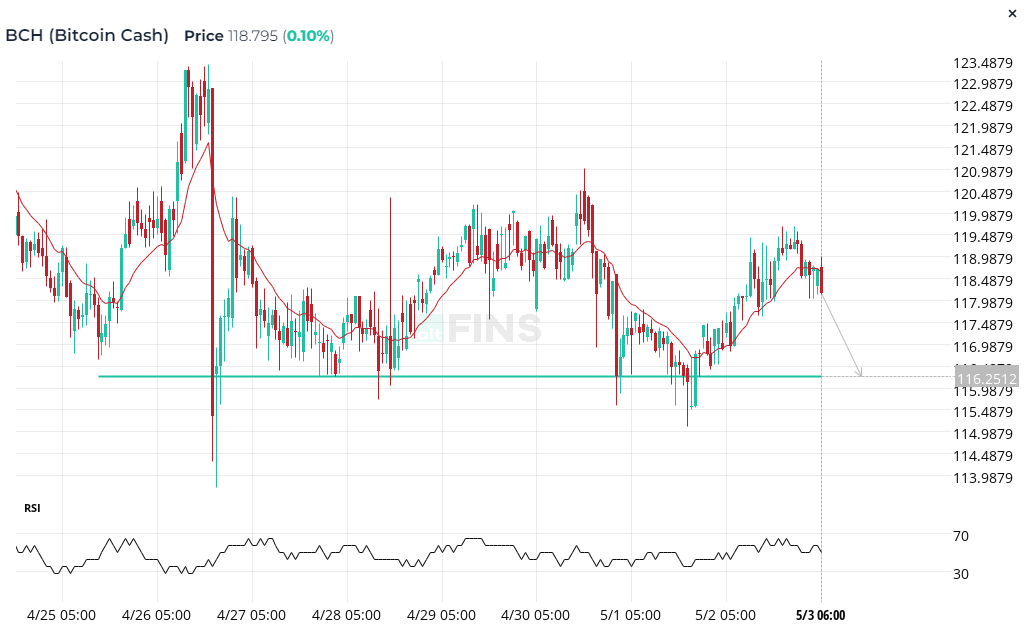Trading around key levels is simple and highly effective!
In trading, much like in life, KISS works the best. Like with a 70%+ win rate.
Trading around key levels is one of those KISS (Keep It Simple Stupid) opportunities that occur often. And they’re ideal for beginner traders.
In crypto trading, key levels refer to specific price points that are considered significant due to their historical relevance or technical analysis. Trading around key levels involves analyzing the market to identify these levels and using them as a reference point for making trading decisions.
For example, if a cryptocurrency has repeatedly bounced off a certain price point in the past, traders may expect it to do so again in the future. They may therefore look to buy at that price level, anticipating a price increase. Similarly, if a cryptocurrency has repeatedly failed to break through a certain resistance level, traders may look to sell at that level, anticipating a price decrease.
In essence, trading around key levels involves using historical data and technical analysis to identify price points that are likely to influence market behavior and using that information to inform trading decisions.
Key levels (horizontal support and resistance) are pillars of technical analysis because these are areas where a lot of trading action happens!
Now, you could look at thousands of charts across multiple time intervals to identify support and resistance levels, or you can use our automated chart pattern recognition to save a ton of time.

Let’s take a look at some of examples of trade setups, which have achieved over 70% success rate in backtests.
There are three ways to trade key levels:
(1) Key level approach. Prices tend to retest support and resistance levels, until broken. Thus, traders can Buy when a coin price is approaching Resistance, and Sell when approaching Support (as in the example below).
BCH (Bitcoin Cash) Approaching Support level

(2) Key level breakout. If the price breaks through a key level, it tends to continue in its path for a while. Thus, traders would Buy breakouts through Resistance level (example below), and Sell breakouts through Support levels.
LDO (Lido DAO) Broke through Resistance level
(3) Key level bounce. Another possible setup is to wait for the price to enter the Support zone and Buy it then, since most of the time it will bounce off the Support level. Vice versa, traders can wait for the price to enter the Resistance zone and Sell (or short) it then, since it’s most likely to bounce back down.
Keep an eye on your time intervals. Beginners should work with longer intervals like 4h and 1d.
Also, keep these trades on for the length of one trade pattern, or until it reached the target profit or Stop Loss level.
Read more on identifying and trading chart patterns in our knowledge base and tutorial.
Risk management – Stop Loss and trade size. In all of these setups, traders should use Stop Loss orders to manage their downside risk, in case the trade goes against us, as it often will. Trading is about probabilities and even though these setups have a high win rate, one must be prepared to minimize losses on the trades that go bust. If Stop Loss order types are not supported by they exchange, at least set up a price alert (see video). Also, trade size should be such that you never risk losing more than 2% of your total equity. Keeping the trade size small allows the trader to setup a wider Stop Loss, which gives the trade more room and time to complete with success. Setting Stop Loss levels too tight can often result in getting knocked out of a trade prematurely.
Also watch the video where Richard (CEO of altFINS) reveals his latest trade in Maker (MKR)
1. Check fundamentals of Maker (revenue and TVL growth)
2. Technical Analysis – Support & Resistance and Momemtum
3. Take Profit and Stop Loss levels
Download altFINS mobile app
Join altFINS crypto trading community
Do you want to learn how to trade crypto? Watch excerpts from 10 Lessons of altFINS crypto trading course!
- Foundation of TA.
- Strategy: Trading moving average crossovers.
- Strategy: Pullback in Up (Down) Trend.
- Strategy: Momentum & Uptrend.
- Strategy: Oversold at Support (Overbought at Resistance).
- Strategy: Trading ranges.
- Strategy: Trading key levels (breakouts and approaches).
- Strategy: Trading chart patterns.
- Risk management.
- Margin account trading & Short selling.
Disclaimer: This content is for informational purposes only, you should not construe any such information or other material as investment, financial, or other advice. There are risks associated with investing in cryptocurrencies. Loss of principal is possible.
Download altFINS mobile app
Join altFINS crypto trading community
Do you want to learn how to trade crypto? Watch excerpts from 10 Lessons of altFINS crypto trading course!
- Foundation of TA.
- Strategy: Trading moving average crossovers.
- Strategy: Pullback in Up (Down) Trend.
- Strategy: Momentum & Uptrend.
- Strategy: Oversold at Support (Overbought at Resistance).
- Strategy: Trading ranges.
- Strategy: Trading key levels (breakouts and approaches).
- Strategy: Trading chart patterns.
- Risk management.
- Margin account trading & Short selling.
